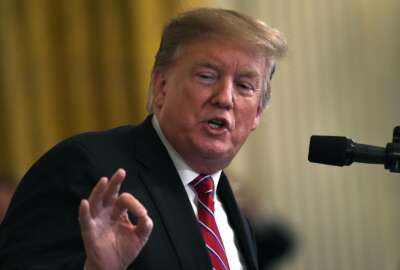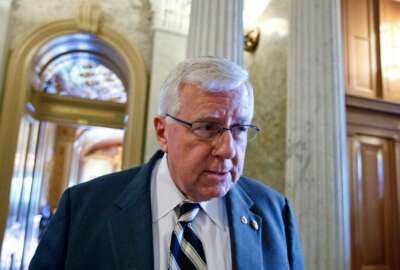
Federal retirement cuts absent from House budget proposal
A new House budget proposal is silent on federal retirement cuts. Instead, it focuses on securing a two-year spending deal that breaks free of the Budget Contro...
A plan to use federal retirement benefits as a vehicle to uncover long term savings is unsurprisingly absent from a new House budget proposal unveiled by Democrats this week.
In fact, the new proposal from House Democrats is a significant departure from the Senate budget resolution passed out of committee two weeks ago. The House version isn’t a budget resolution, and it doesn’t include any kind of reconciliation instructions.
If the House had chosen to draft a resolution comparable with the Senate version, it would have included reconciliation instructions to the Oversight and Reform Committee to find billions of dollars in savings over the next five years, likely through cuts to the federal retirement system.
The Senate budget proposal directs the Homeland Security and Governmental Affairs Committee to find $15 billion in savings over the next five years. Though the resolution doesn’t explicitly say what program the committee should tap to find these savings, recent history — and the Senate panel’s jurisdiction — makes the President’s federal retirement proposals a likely target.
But the House budget proposal makes no such suggestion, instead choosing to focus on what could be the most daunting task ahead of fiscal 2020: setting new spending levels for the next two years.
The Investing for the People Act of 2019, first introduced by House Budget Committee Chairman John Yarmuth (D-Ky.), sets new spending caps for 2020 and 2021. It sets spending levels at $631 billion for non-defense agencies in 2020, $34 billion, or a 5.7% increase, above the 2019 cap and is $88 billion above the existing BCA cap of $543 billion.
Increases to non-defense discretionary spending is necessary, in part, because of recent changes to veterans community care programs. The VA MISSION Act, which the President signed into law last summer, changed community care from a mandatory program to a discretionary one.
The bill also includes provisions to allow for adjustments to non-defense spending caps for two specific programs — $7.5 billion to administer the 2020 Census and increases to the discretionary spending limits of up to $400 million in 2020 and $750 million in 2021 for tax enforcement programs.
“The [budget] committee believes providing this adjustment will allow the IRS to reduce tax noncompliance and produce significant net savings,” a report on the House budget bill reads. “Since 2010, IRS enforcement funding has declined by 25% after adjusting for inflation, and the enforcement division has lost roughly 30% of its workforce. The cuts have driven a more than 40% decline in the rate of audits, especially for high-income individuals and large corporations, while enforcement needs have grown as a result of the 2017 tax law.”
The House budget proposal sets defense spending levels at $664 billion.
That’s a significant departure from the both the President’s 2020 budget request and the budget proposal from Senate Republicans.
Related Stories
The House budget proposal does rule on the Overseas Contingency Operations fund. OCO funding for defense programs shouldn’t exceed $69 billion and $8 billion for non-defense programs, the House proposal said.
Congressional leaders gear up for 2-year spending deal debate
The budget bill cleared the House Budget Committee last week. The full House was supposed to take up the bill this week, but Majority Leader Steny Hoyer (D-Md.) has postponed the vote until after the upcoming two-week congressional recess.
Though it’s unlikely the Senate would pass the House budget bill in its current form, the House bill starts a conversation about the need to adjust Budget Control Act caps.
“The time to act is now,” the House bill report reads. “The sooner that Congress can reach a bipartisan agreement on discretionary caps, the sooner the House and Senate Appropriations committees will have clarity regarding ‘’top line’’ spending levels within which they can craft their must-pass legislation. Delaying this inevitable and necessary decision will only create chaos and disruption in the appropriations process at the final hour, setting the stage for another government shutdown.”
Senate leaders are also gearing up for conversations on a two-year spending deal.
“We’ve agreed to put together at the staff level a group to begin discussing the possibility of reaching a two-year caps deal so we can move ahead, hopefully, with some kind of regular appropriations process,” Senate Majority Leader Mitch McConnell (R-Ky.) said Tuesday. “I think there’s a bipartisan desire to avoid a CR and obviously to avoid a sequester.”
Achieving parity between defense and non-defense spending will be a top priority for Democrats, as it has been for years. Republicans have and will continue to advocate for deficit reductions. Federal employees, meanwhile, should watch for how Congress may attempt to offset increases to the spending caps over the next two years.
Congress tapped into federal retirement benefits in 2013 to offset spending increases, which resulted in a change to the Federal Employee Retirement System (FERS). Lawmakers may look to the federal retirement system again to make additional offsets.
Copyright © 2024 Federal News Network. All rights reserved. This website is not intended for users located within the European Economic Area.
Nicole Ogrysko is a reporter for Federal News Network focusing on the federal workforce and federal pay and benefits.
Follow @nogryskoWFED






